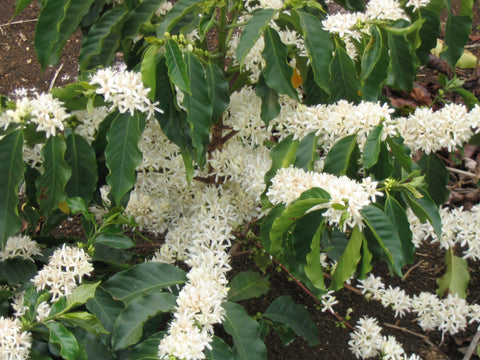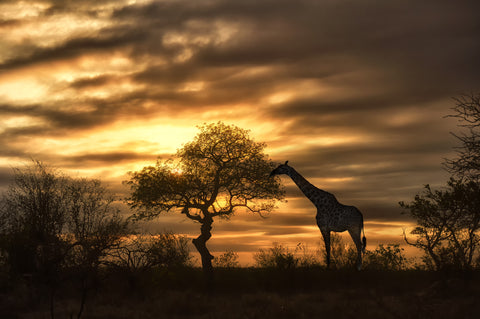 Like fine wine, the revered coffees of the world acquire distinctive qualities and exceptional flavor by virtue of their geography. Since our coffee company operates in the heart of northeastern Ohio's grape country and fine wineries, we are particularly conscious of a fundamental similarity between coffee production and wine production. A raw product of noble ancestry grown in a time-honored location is as crucial to wine making as it is to specialty coffee roasting.
Like fine wine, the revered coffees of the world acquire distinctive qualities and exceptional flavor by virtue of their geography. Since our coffee company operates in the heart of northeastern Ohio's grape country and fine wineries, we are particularly conscious of a fundamental similarity between coffee production and wine production. A raw product of noble ancestry grown in a time-honored location is as crucial to wine making as it is to specialty coffee roasting.
SPECIALTY-GRADE COFFEE
Specialty-grade coffee represents the top two percent of all coffee grown worldwide yearly. Mountainous regions of the Coffee Belt, a tropical band extending 30 degrees north and south of the equator, produce the world's truly great coffees. High elevations provide ideal growing conditions for the coffee tree: a frost-free climate averaging 70 degrees F year-round, moderate rainfall, and abundant sunshine. Coffee thrives in lush volcanic soil at elevations over 1200m. These conditions prolong bean development to enhance flavor and acidity. Latin America, Africa, and Indonesia benefit from these microclimates and represent the world's foremost coffee growing regions.
 "TASTE OF PLACE"
"TASTE OF PLACE"
The truly superb coffees of the world descend from the same botanical varietal Coffea arabica, indigenous to Ethiopia. As coffee cultivation and production spread throughout the world, characteristics of the Arabica bean became more distinctive from one geographic location to another. Slight differences in soils, microclimates, and processing methods imparted unique properties to the beans that influenced their flavor, body, aroma, and acidity. In essence, coffee from each growing region reveals a unique "taste of place" in the cup—known as terroir—and helps to account for the deep regard paid to single origin coffees. The grand crus—or great growing regions—of the coffee world are few in number. As accessible luxuries, these premier Arabica coffees are treasured for their flavor and overall bean quality. They are identified by country, followed by growing region, estate, plantation, auction lot, or by a term denoting regions.
THE INFLUENCE OF GEOGRAPHY IN COFFEE REGIONS
Arabica coffees from each of the world's growing regions share similar attributes that help consumers select the coffees they are most likely to enjoy. Coffees of the Americas are admired for their balance, simplicity, straightforward berry notes, and clean finishes. Collectively, they represent the taste qualities most Americans equate with coffee and inspire the descriptive phrase, "the classic American cup." African coffees are lauded for their diversity, yet all share notes of wine and fruit. The heady aroma and exotic flavor of these coffees place them among the world's elite. Coffees of Indonesia take full advantage of the area's equatorial climate, generous soil, and high altitude. The Sumatra-New Guinea growing region is known as the "Golden Triangle" of stunning coffees with unparalleled body, layered complexity, and spice-laden flavors.
Specialty-grade coffee represents the top two percent of all coffee grown worldwide yearly. Mountainous regions of the Coffee Belt, a tropical band extending 30 degrees north and south of the equator, produce the world's truly great coffees. High elevations provide ideal growing conditions for the coffee tree: a frost-free climate averaging 70 degrees F year-round, moderate rainfall, and abundant sunshine. Coffee thrives in lush volcanic soil at elevations over 1200m. These conditions prolong bean development to enhance flavor and acidity. Latin America, Africa, and Indonesia benefit from these microclimates and represent the world's foremost coffee growing regions.
 "TASTE OF PLACE"
"TASTE OF PLACE"The truly superb coffees of the world descend from the same botanical varietal Coffea arabica, indigenous to Ethiopia. As coffee cultivation and production spread throughout the world, characteristics of the Arabica bean became more distinctive from one geographic location to another. Slight differences in soils, microclimates, and processing methods imparted unique properties to the beans that influenced their flavor, body, aroma, and acidity. In essence, coffee from each growing region reveals a unique "taste of place" in the cup—known as terroir—and helps to account for the deep regard paid to single origin coffees. The grand crus—or great growing regions—of the coffee world are few in number. As accessible luxuries, these premier Arabica coffees are treasured for their flavor and overall bean quality. They are identified by country, followed by growing region, estate, plantation, auction lot, or by a term denoting regions.
THE INFLUENCE OF GEOGRAPHY IN COFFEE REGIONS
Arabica coffees from each of the world's growing regions share similar attributes that help consumers select the coffees they are most likely to enjoy. Coffees of the Americas are admired for their balance, simplicity, straightforward berry notes, and clean finishes. Collectively, they represent the taste qualities most Americans equate with coffee and inspire the descriptive phrase, "the classic American cup." African coffees are lauded for their diversity, yet all share notes of wine and fruit. The heady aroma and exotic flavor of these coffees place them among the world's elite. Coffees of Indonesia take full advantage of the area's equatorial climate, generous soil, and high altitude. The Sumatra-New Guinea growing region is known as the "Golden Triangle" of stunning coffees with unparalleled body, layered complexity, and spice-laden flavors.
 The influence of geography on a cup of Arabica coffee extends to processing and cultivation methods practiced in a region, as well as to political and environmental factors—each affecting a coffee's flavor, bean quality, or accessibility. For example, Sulawesi Toraja is a dry-processed coffee, meaning that its beans, or coffee seeds, are defruited by first drying the beans inside their coffee cherries and then removing the fruit. This approach imbues the bean with a sweet complexity, while sugars from the drying cherry impart more soluble solids to the bean that amplify body. The dry-process method employed in Sulawesi is central to understanding why the Sulawesi Toraja renders a sweet, full-bodied cup.
The influence of geography on a cup of Arabica coffee extends to processing and cultivation methods practiced in a region, as well as to political and environmental factors—each affecting a coffee's flavor, bean quality, or accessibility. For example, Sulawesi Toraja is a dry-processed coffee, meaning that its beans, or coffee seeds, are defruited by first drying the beans inside their coffee cherries and then removing the fruit. This approach imbues the bean with a sweet complexity, while sugars from the drying cherry impart more soluble solids to the bean that amplify body. The dry-process method employed in Sulawesi is central to understanding why the Sulawesi Toraja renders a sweet, full-bodied cup.
Ethiopia cultivates its coffees organically as it has for centuries. Untouched by chemicals and favored by tropical shade, the Ethiopia Yirgacheffe flourishes in fertile soil among crops of citrus and banana in villagers' gardens. Once the Yirgacheffe's cherries are harvested, they are either wet-processed, i.e., the fruit is removed before the beans are dried, or they are dry-processed. In either case, the defruited beans are spread out to dry on raised terraces. Owing to its cultivation and processing, the highly absorbent Yirgacheffe bean takes on flavors from its soil, coffee cherry, crops growing nearby, and drying surface. Celebrated for its cascade of lemon-laced notes and soaring floral aroma, the Yirgacheffe is exquisitely shaped by its location.
OTHER GEOGRAPHICAL FACTORS AFFECT COFFEE QUALITY
OTHER GEOGRAPHICAL FACTORS AFFECT COFFEE QUALITY
A region's political and environmental climate also affects coffee quality and availability. Kenya, for example, is one of the world's most universally admired coffee origins. Its quality-driven export industry has elevated Kenyan coffees to prominence as among the finest coffees in the world. Some would argue the finest. On the other hand, Java led the world in Arabica coffee production until leaf rust nearly decimated the industry in 1865. Disease-resistant, inferior robusta plants replaced the ruined crop, save for a few estates the government reserved for Arabica production in the mountains of East Java. Today more than 95% of Indonesia's exported coffee is robusta.
"TASTE OF PLACE" IN VERY DARK ROASTED COFFEES
One will not taste a bean's "geography" in an extremely dark roasted coffee. A coffee's peak flavor is achieved at a precise point in the roasting process, generally between a "Medium-Light" and a "Medium Dark" roast. This target varies by coffee and is known as a coffee's roast style. (Learn more at our blog, "The Effect of Roast Style on Coffee Flavor.") Some coffees display equally well at several roast levels, however. Varietal flavors deepen to baritone complexities in a "Dark Roast," but in a "Very Dark Roast" all varietal properties are muted. The carbonized taste of a very darkly roasted coffee results when beans have yielded all flavor of origin to the power of a highly intense roast.
 The influence of geography on a coffee bean is profound. Understanding this only deepens one's appreciation for Sumatra's earthy flavor, Guatemala's chocolate-toned spice, or Kenya's fruit-hued complexity. The extraordinary appeal of single-origin flavor has long persuaded coffee lovers to embrace the world's most impressive offerings.
The influence of geography on a coffee bean is profound. Understanding this only deepens one's appreciation for Sumatra's earthy flavor, Guatemala's chocolate-toned spice, or Kenya's fruit-hued complexity. The extraordinary appeal of single-origin flavor has long persuaded coffee lovers to embrace the world's most impressive offerings.